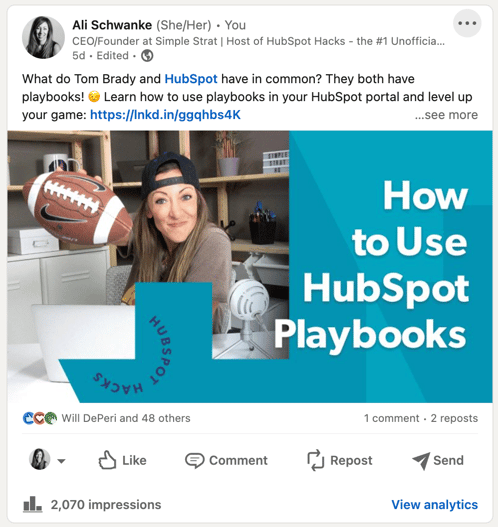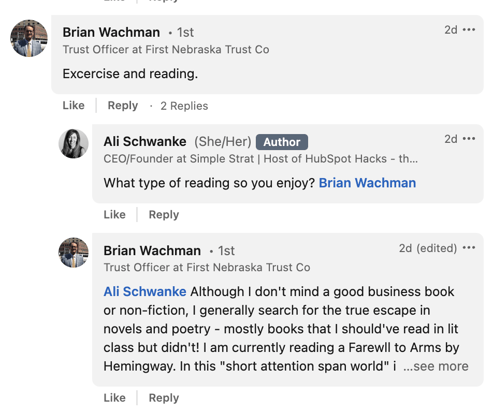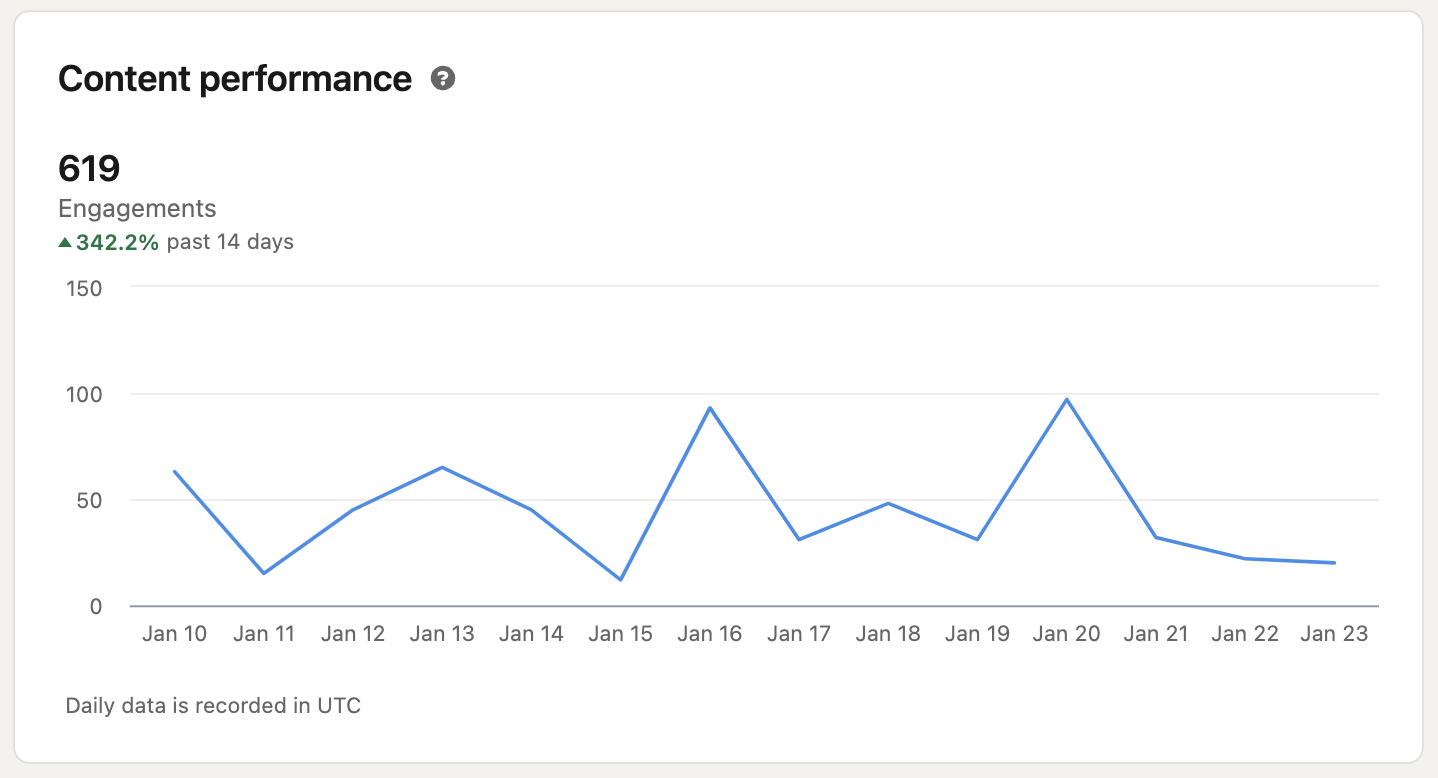LinkedIn is hot. And we mean, REALLY hot.
Not only is it one of the fastest growing social networks, but it’s delivering a whole host of value when it comes to B2B connections and influence. In fact, a recent study by Content Marketing Institute revealed that 91% of B2B marketers use LinkedIn to distribute content.
But it’s not a set it and forget it strategy. It requires work and persistence to generate an ROI from your efforts. But like taming a wild animal, it can be a beast of a job to wrangle the platform and feel like your efforts are going somewhere.
So why is there such a big difference between people getting results on the platform and those that say "it's just not working for me"?
LinkedIn drives results - but not for everyone
There are a number of reasons why your results may lag behind, but it often comes down to a couple of key things. Thankfully, they're concepts we can cover in 5 minutes and you can revisit your strategy and tactics immediately to start getting better results.
The top 6 reasons why you're not getting results include:
1. Not putting your audience first
Without knowing who your ideal customer is, it's difficult to create content that resonates with those folks. To remedy this, conduct market research to understand who your target audience is, what their pain points are and what type of content they engage with.
This can be as simple as reviewing your target customers on LinkedIn, what type of content they’ve liked or shared, or commented on recently, and the types of groups, companies, or thought leaders they follow.
Remember, LinkedIn posts that do well are targeted toward driving value for other people – not simply posting what you want to say from a soapbox.
2. Not optimizing posts for the LinkedIn algorithm
This is like playing baseball or football, but not really knowing the rules of the game. LinkedIn's algorithm favors certain types of content and post formats, so if you’re not optimizing your posts for these variables, you may not reach as many people.
What’s the solution here?
Research and understand the best practices for optimizing content for the LinkedIn algorithm and make sure to follow them when creating and publishing content.
For example, according to LinkedIn, posts that include images receive 98% more comments than text-only posts. And posts that invite engagement, such as a question and answer or voting scenario, will far outweigh those that share a fact with no potential for discussion.
This is a good example because instead of just posting a link to the article, our team made an interesting graphic to draw attention and then highlight the content in a unique way.

Review the types of posts that the top thought leaders use, reflect on those and then try them for yourself.
3. Not engaging with the audience (seriously)
As we mentioned in the intro, you cannot set it and forget it. It does require work, but think of it as a large trade show. You wouldn’t sit at your booth with your head down as people walk by?? (If you do that, you should not be at the show!)
Likewise, LinkedIn is a social network, and like any other social network, it's important to engage with your audience by responding to comments and messages. Case in point:

According to a study by Social Media Today, companies that respond to messages within an hour are seven times more likely to have a successful conversation.
Set some time aside each day to interact with your posts, and others posts on the platform. That activity alone feeds the algorithm (back to point #2)
4. Not being consistent
In other words…..random posting is not a strategy.
To generate results on LinkedIn, you need to be post regularly – even if you’re not sure what to say (that’s where the prompts come in. Get our free list of LinkedIn posting prompts you can use to write your next post - keep scrolling to find them at the end of this article!).
To ease this challenge, create a content calendar to plan and schedule posts in advance, and make sure to stick to a consistent posting schedule.
According to a study by Sprout Social, brands that post more than 20 times per month on LinkedIn see 60% more engagement than those that post less frequently.
5. Being afraid to use paid promotion
If you’re an individual thought leader, this one may not apply as much to you. But if you’re working as part of a bigger team, you’ll want to consider paid promotion at some point. Organic reach is limited on LinkedIn, so paid promotion can help you reach a larger audience and generate results.
For example, according to LinkedIn, Sponsored Content receives an average click-through rate of 1.74%, and Sponsored InMail receives an average open rate of 29%.
Sales and marketing teams can work together here to use paid for lead gen, content amplification, or even to get your thought leader’s brand in front of more people from the company perspective.
6. Not tying your metrics to your strategy and goals
Or not paying attention to metrics at all.
This is a challenge regardless of what platform we’re talking about. Too many times, people are not consistent, they have no strategy, and then they’re trying to measure metrics of hat’s working.
You wouldn’t start a workout plan without knowing what you want to achieve would you?
Same thing here. Without measuring and analyzing the results of their content, marketers can't know what's working and what's not, and they can't make data-driven decisions about their content strategy.
Before even jumping in, consider what you want to work on. In our case, we’ve ran experiments in a couple of different areas.
You may try a 30 day campaign to increase your followers on your personal profile. Or a 60 day campaign to increase page engagement. You can see your engagement overtime using the analytics on your personal profile, like this:

Here are a list of goals you may consider with your sales team, executives, or yourself:
- Increase number of followers - by doing this, it directly affects how many people see the content once you share it. More followers = more exposure.
- Increase engagement - test out different types of posts to see what your audience finds valuable
- Increase DMs - ask for feedback or insight on something and encourage people to send you a message
- Increase views - commenting on others posts and optimizing your profile increases the opportunity for people to view your profile on the platform. You can use those views then to extend a connection request, or if your potential connection is looking for an expert or resource in a certain area, you may offer to connect on a call.
Whatever the goal, the strategy and metrics should correspond so they’re tied together.
LinkedIn Posting Prompts for B2B Thought Leaders
Getting started or sharing content is often one of the roadblocks for non-content creators (heck, even content creators get stumped from time to time!).
To help you get started down the path of LinkedIn success, below is a list of 15 prompts that could help you nail down some content ideas to share on the platform. Whether you're working on a full blown thought leadership strategy or not, these will start the momentum you need.
Keep in mind, the goal is to drive value, not merely spout things out into the interwebs. Think about how this benefits your audience and frame the content in that light.
- Share a success story or case study of a recent project you worked on.
- Share an industry trend and your thoughts on it.
- Share a helpful tip or piece of advice in your field.
- Share an interesting article or report related to your industry.
- Share a testimonial or review from a satisfied customer.
- Share a behind-the-scenes look at your company or team.
- Share a video or live-stream discussing a topic related to your industry.
- Share a quote or inspiration related to your field or industry.
- Share a poll or survey to gather feedback from your audience.
- Share an upcoming event or webinar that you're hosting or participating in.
- Share a personal story or experience that ties in with your industry or field.
- Share an infographic or data visualization that illustrates a point related to your industry.
- Share a personal achievement or milestone, such as a new certification or award.
- Share a Q&A session with a thought leader or industry expert.
- Share a curated list of resources or tools that can be helpful for people in your industry.
- Share an exclusive offer or promotion for your products or services.
- Share a challenge or contest related to your industry.
- Share a job posting or career opportunity at your company.
Get the free 30-day posting plan 🔥
If you’re wanting to take this a step further and really nail down your execution, request a copy of the 30 day posting plan – complete with prompts for each day and a tracking sheet for your results. Simply shoot an email to hello@simplestrat.com and ask for the free 30 day posting plan.
How else can you use LinkedIn to market your company?
There are endless ways to use the platform, but elevating thought leaders in your company is one of the most effective. If you're a marketing manager or director, it's imperative to coach and help your leaders maintain a presence and point of view on the platform. If you're the leader in question here, perhaps you could use a helping hand to create the content and stay relevant.
Figure out the roadblock and work your way through it - because there's gold on the other side.
Let us know if there are additional topics or challenges we can help you with in this area – or explore our content marketing services to outsource these types of campaigns and more to our expert team.


